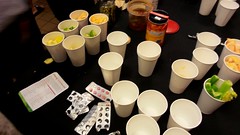 Francesca Minerva and me have a new paper out: Cryopreservation of Embryos and Fetuses as a Future Option for Family Planning Purposes (Journal of Evolution and Technology – Vol. 25 Issue 1 – April 2015 – pgs 17-30).
Francesca Minerva and me have a new paper out: Cryopreservation of Embryos and Fetuses as a Future Option for Family Planning Purposes (Journal of Evolution and Technology – Vol. 25 Issue 1 – April 2015 – pgs 17-30).
Basically, we analyse the ethics of cryopreserving fetuses, especially as an alternative to abortion. While technologically we do not have any means to bring a separated (yet alone cryopreserved) fetus to term yet, it is not inconceivable that advances in ectogenesis (artificial wombs) or biotechnological production of artificial placentas allowing reinplantation could be achieved. And a cryopreserved fetus would have all the time in the world, just like an adult cryonics patient.
It is interesting to see how many of the standard ethical arguments against abortion fare when dealing with cryopreservation. There is no killing, personhood is not affected, there is no loss of value of the future – just a long delay. One might be concerned that fetuses will not be reinplanted but just left in limbo forever, but clearly this is a better state than being irreversibly aborted: cryopreservation can (eventually) be reversed. I think our paper shows that (regardless of what one thinks of cryonics) the irreversibility is the key ethical issue in abortion.
In the end, it will likely take a long time before this is a viable option. But it seems that there are good reasons to consider cryopreservation and reinplantation of fetuses: animal husbandry, space colonisation, various medical treatments (consider “interrupting” an ongoing pregnancy because the mother needs cytostatic treament), and now this family planning reason.
 Our paper on tie knot classification is finally officially published: (2015) More ties than we thought. PeerJ Computer Science 1:e2.
Our paper on tie knot classification is finally officially published: (2015) More ties than we thought. PeerJ Computer Science 1:e2.
